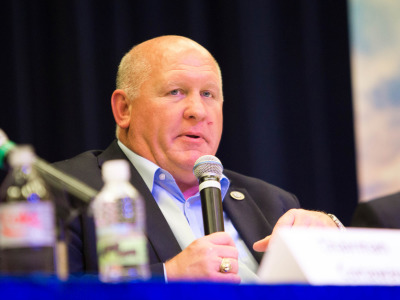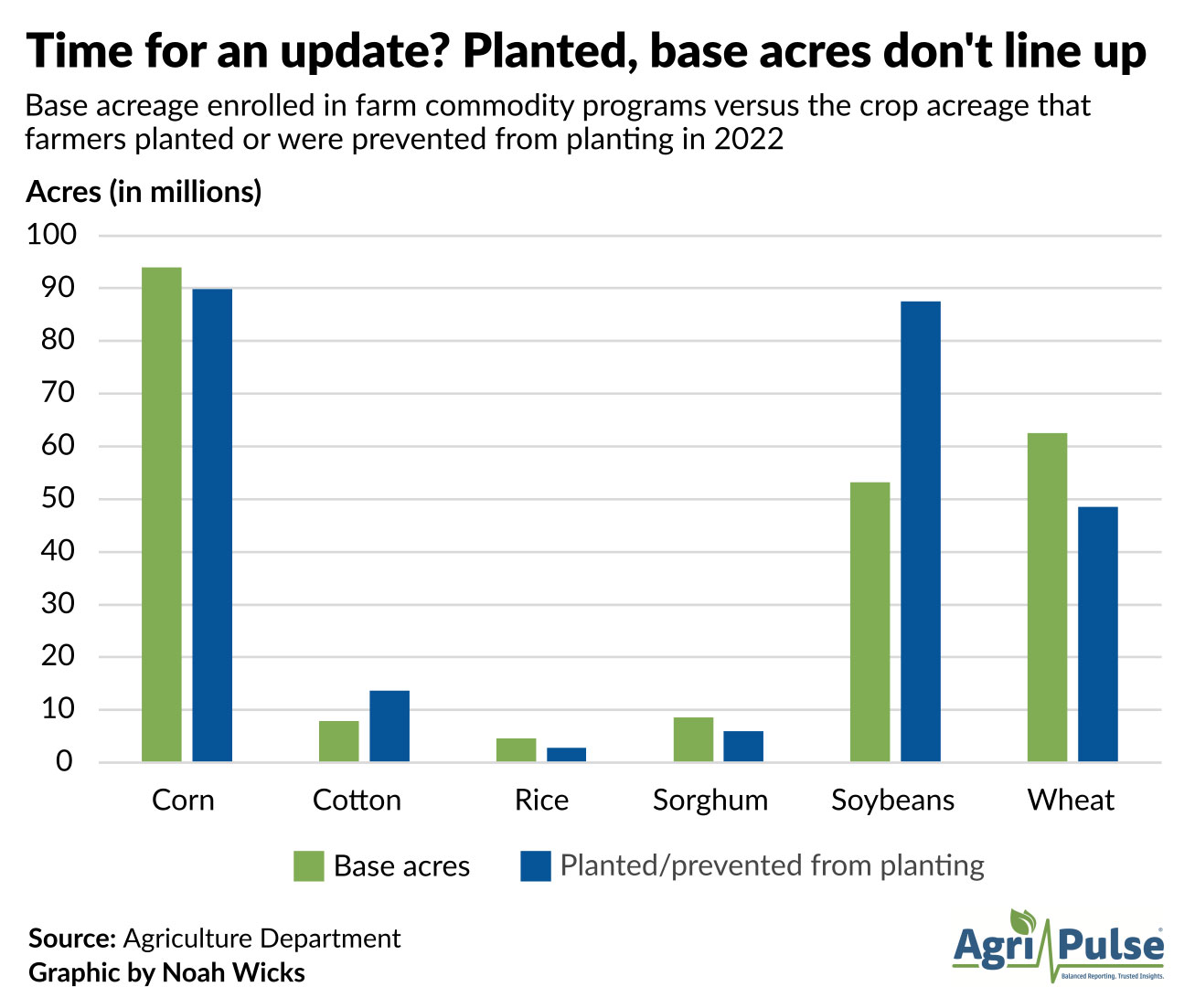Farmers like Caleb Ragland are missing out on a big part of the farm bill’s safety net, and lawmakers are struggling to figure out what to do about it.
Three-quarters of the land that Ragland, 36, and his family farm in central Kentucky is ineligible for the major commodity programs: Agriculture Risk Coverage and Price Loss Coverage. That’s because much of the land was in pasture or tobacco two decades ago when USDA designated the base acreage that would be eligible for programs intended for corn, soybeans and other row crops.
Now, the family farm largely grows corn, soybeans and wheat, crops that are environmentally sustainable in the area because of no-till technology, he said.
“We need the opportunity for a voluntary base update,” Ragland - testifying on behalf of the American Soybean Association - told a Senate Ag subcommittee on Tuesday. “Many farmers like myself have a very small percentage of crop acres that have base.” He said that leaves these farmers unprotected by PLC and ARC, “which are the backbone of Title I,” the farm bill commodity title.
House Agriculture Committee Chairman Glenn “GT” Thompson, R-Pa., told Agri-Pulse in an interview that he’s heard a lot of requests in recent months to update base acreage and to make additional acreage eligible for the program.
“I think we at least need to look at it and talk about it, because I mean there's probably some folks that have base that aren't farming or they have base and their farming something else other than what the base was for,” Thompson said. “I think we're doing our job. We're providing oversight and taking a good look at all aspects of the farm bill.”
He acknowledged that adding base acres could be costly. “We'll continue to look at it and see what we can do," he said.
 House Ag Committee Chair Glenn "GT" Thompson, R-Pa.
House Ag Committee Chair Glenn "GT" Thompson, R-Pa.
Since the 2002 farm bill, commodity payments have been tied to a farmer’s base acres, which were determined by what crops the farms grew from 1998 through 2001. It makes no difference what crops a farmer grows in a particular year; eligibility for program coverage is tied solely to their base acres. Tying payments to base acres, rather than planted acres, is supposed to ensure that farmers make planting decisions based on market prices rather than on prospects for government payments.
But farmers are ineligible for payments on several million acres normally planted to crops lack base, such as Ragland’s land, according to USDA records. As a result, lawmakers say there is even some discussion of once again tying payments to planted acres, a staple of Depression-era farm programs.
Some other farmers who do have base have shifted into growing different commodities, and they’d like the chance to update their program acreage to reflect the change in crops.
The House Agriculture Committee is working with USDA to identify areas where farmers lack base acres.
A congressional source familiar with the committee’s deliberations says a behind-the-scenes discussion about tying commodity programs to planted acres rather than base acres is largely driven by the concerns about farmers who don’t have base acreage, and many lawmakers don’t understand the change could run afoul of international trade rules.
In an interview, Ragland said many young farmers often lack base acres because land that’s ineligible for ARC and PLC is more affordable. He pushes back against critics who say it would be unfair to enroll that land into the commodity programs when the relatively low purchase price was based on its ineligibility. “Land prices have skyrocketed (in central Kentucky) like they have everywhere,” he said.
While the current base allocation is largely tied to what crops farmers grew from 1998 through 2001, some growers took advantage of a voluntary base update provided by the 2014 farm bill. That reallocation, if farmers elected to do it, was determined by what crops were grown from 2009 to 2012.
Don’t miss a beat! It’s easy to sign up for a FREE month of Agri-Pulse news! For the latest on what’s happening in Washington, D.C. and around the country in agriculture, just click here.
The current base allocation reflects long-term shifts in cropping practices. There are currently far more acres planted to soybeans than there are base soybean acres. Conversely, wheat base far exceeds the acreage planted to that crop each year.
In 2022, USDA reported that farmers planted or were prevented from planting 87.5 million acres of soybeans, but there were only 53.2 million soybean base acres enrolled in ARC and PLC. Farmers planted or were prevented from planting 48.6 million acres of wheat, far short of the 62.5 million acres of wheat base. Similarly, while farmers hold 4.6 million rice base acres, growers planted or were prevented from planting just 2.8 million acres of rice.
Corn is more aligned with base acreage. There were 89.9 million acres of planted or prevent-plant corn in 2022, compared to 93.96 million acres of corn base.
According to calculations by Texas A&M University economists, there were 240.6 million base acres in 2022, but 249.5 million acres that were planted or prevented from planting to nine program crops: barley, corn, cotton, oats, peanuts, rice, sorghum, soybeans and wheat.

The economists, Joe Outlaw and Bart Fischer, noted in an article for Southern Ag Today that the main argument for tying commodity programs to historical, base acreage, rather than planted acreage, was “the desire to not have potential commodity program benefits unduly influence program commodity plantings.
“On the other hand, using planted acres as the basis for payments would allow producers to more effectively manage their risk, as potential payments would be based on the crop they are actually planting.”
Rep. Austin Scott, the Georgia Republican who chairs House Ag’s Subcommittee on General Farm Commodities, Risk Management and Credit, confirmed in an interview that the discussion about planted-versus-base acres is primarily about addressing the needs of farmers who don’t have base acres. He said there are producers who aren’t farming the base acreage that they have.
“Especially for those people who don't have any base, you’ve got to have a system that works for those farmers,” he said.
For more news, go to Agri-Pulse.com.


